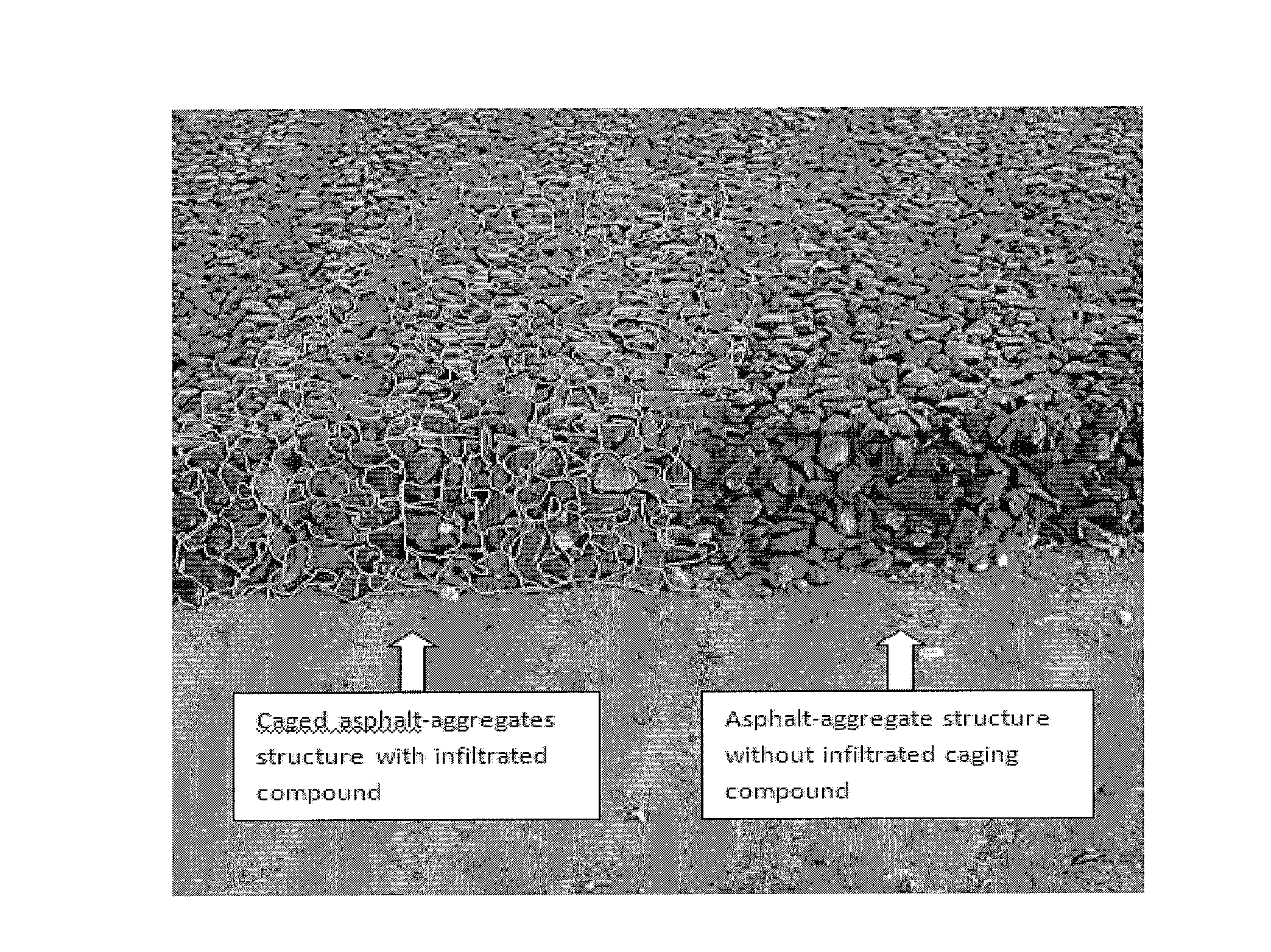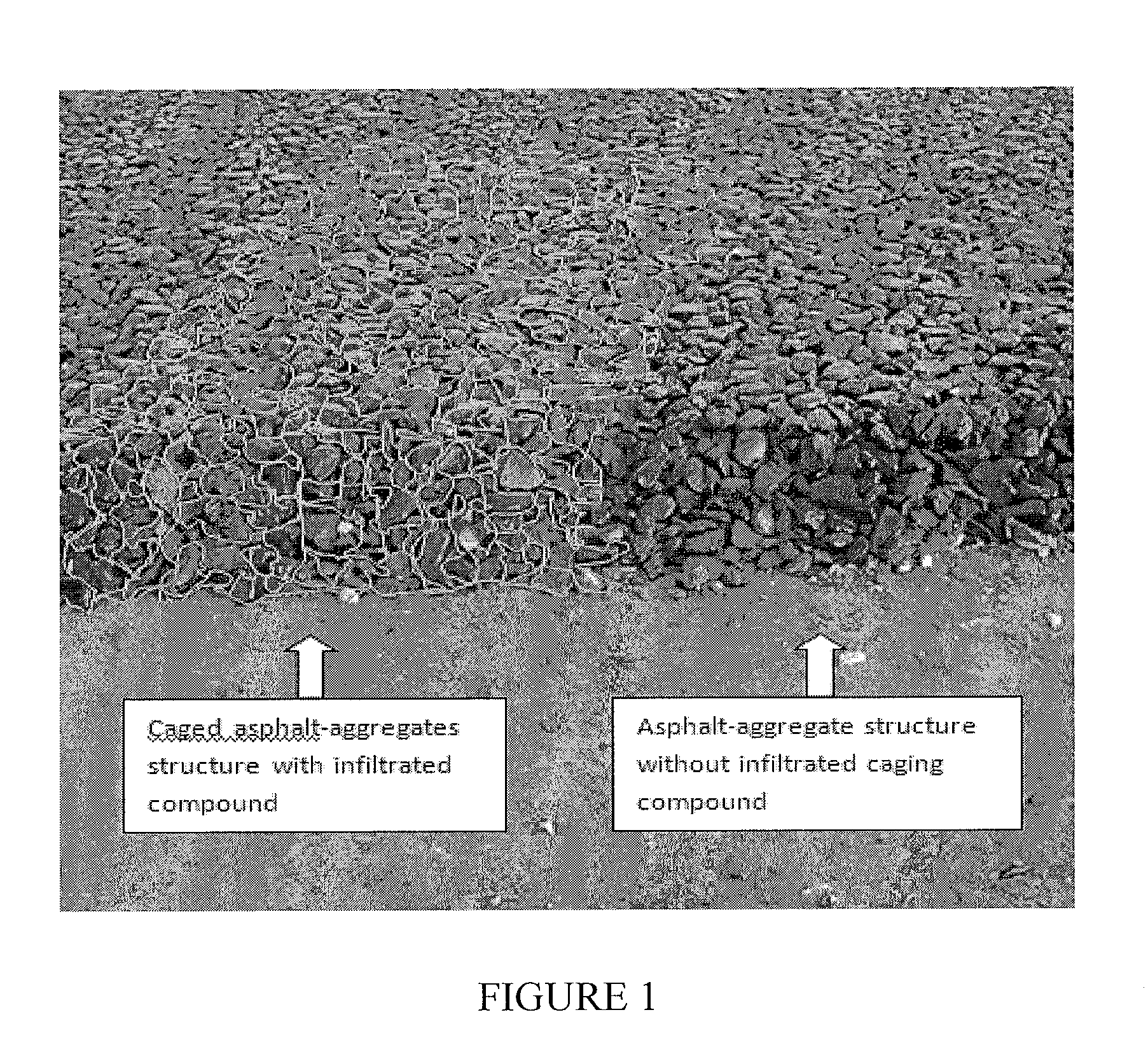Application of high toughness, low viscosity nano-molecular resin for reinforcing pothole patching materials in asphalt and concrete base pavement
a nano-molecular resin and pothole patching technology, applied in the direction of paving details, sewer pipelines, gymnasiums, etc., can solve the problems of mechanical damage, severe impact on the life of concrete structures, and chronic damage to concrete structures such as roads, runways, etc., to increase the durability of concrete, reduce the effect of aging
- Summary
- Abstract
- Description
- Claims
- Application Information
AI Technical Summary
Benefits of technology
Problems solved by technology
Method used
Image
Examples
Embodiment Construction
Overview
[0020]In a first embodiment, the present invention comprises a method of increasing the strength and / or durability of concrete comprising infusing said concrete with a oligomeric solution having a viscosity of less than about 200 cps and curing in less than about 24 hours, comprising a nanomolecular precursor, and optionally a solvent, optionally a catalyst, optionally an accelerator, and / or, optionally an initiator; and forming a polymer having a toughness of greater than 6.0 ft-lbs / in as measured by Notched Izod Impact Toughness.
[0021]In another embodiment, the nanomolecular precursor comprises an olefin, ester, urethane, imide, melamine, urea-formaldehyde, silicone, phenol, maleimide, or epoxide. In some embodiments, the nanomolecular precursor comprises a cyclic olefin. In another embodiment, the nanomolecular precursor comprises a cyclic olefin that undergoes ring opening metathesis polymerization (“ROMP”). In another embodiment, the nanomolecular precursor comprises a ...
PUM
| Property | Measurement | Unit |
|---|---|---|
| molecular length | aaaaa | aaaaa |
| molecular length | aaaaa | aaaaa |
| molecular length | aaaaa | aaaaa |
Abstract
Description
Claims
Application Information
 Login to View More
Login to View More - R&D
- Intellectual Property
- Life Sciences
- Materials
- Tech Scout
- Unparalleled Data Quality
- Higher Quality Content
- 60% Fewer Hallucinations
Browse by: Latest US Patents, China's latest patents, Technical Efficacy Thesaurus, Application Domain, Technology Topic, Popular Technical Reports.
© 2025 PatSnap. All rights reserved.Legal|Privacy policy|Modern Slavery Act Transparency Statement|Sitemap|About US| Contact US: help@patsnap.com


